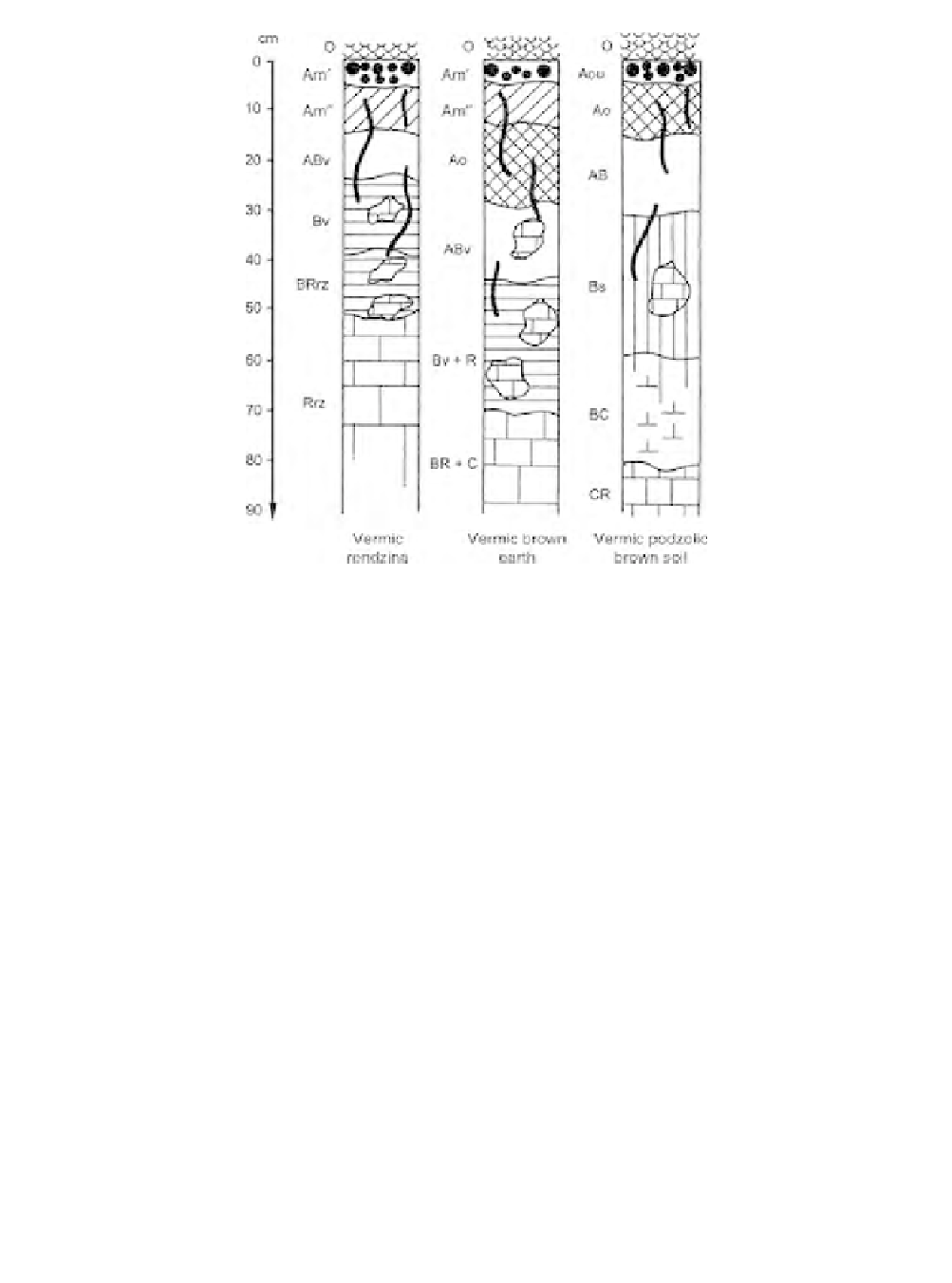Agriculture Reference
In-Depth Information
FIGURE 7.14
Profiles of three vermic soil subtypes from the Carpathians.
In all structural photograms, three types of earthworm casts can be distinguished; consisting
of (1) mineral material brought up by earthworms from the deeper horizons; (2) predominantly
organic material, mainly plant remnants in various breakdown stages, with casts or microaggregates
of mesoinvertebrates; and (3) organo-mineral earthworm casts from deeper soil material mixed
with organic remnants of ingested food. The series of structure photograms shows the well-aerated
crumb, porous structure of the surface soil horizons, made up almost entirely of earthworm casts,
with large spaces among them. In the deeper horizons, the casts are increasingly pressed together,
and the pore spaces are smaller. In the upper soil horizons, a spongelike microstructure dominates
because of the activity of mesoinvertebrates; the earthworm castings, which are rich in organic
matter, provide a suitable medium for the development of smaller invertebrates.
Large amounts of soil material from the deeper soil horizons are brought to the surface and
deposited as earthworm casts, thus burying former surface cast horizons. Their secondary and
tertiary comminution is achieved by a series of smaller and smaller soil organisms (animals, fungi,
and bacteria) as well as by physicochemical weathering. The organic remnants brought into soil
by earthworms, with an initial recognizable tissue structure, gradually turn into Ñfine humus.Ò In
the deeper horizons, the diameter of earthworm casts is smaller than those at the soil surface. The
spongelike microstructure caused by the mesoinvertebrates diminishes, and the horizons appear
more compact. However, the earthworm cast structure does not totally disappear even in the deeper
soil horizons.
P
HYSICAL
AND
C
HEMICAL
P
ROPERTIES
OF
V
ERMIC
S
OILS
The physical and chemical properties of the three soils investigated are normal for their evolutionary
stages and the pedoclimatic conditions. Thus, the particle size distribution, the humus content, pH,
exchangeable bases, and total and mobile nutrient content are all within the usual limits of ÑtypicalÒ
nonvermic soils (Pop and Vasu 1995).






































